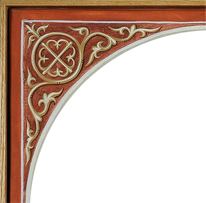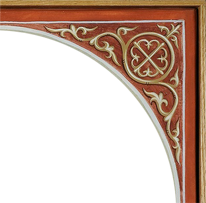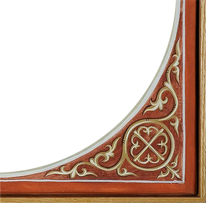The Feast of the Life-giving Spring has its origins in the 5th century. It is the feast that commemorates the consecration of the Church of The Life-giving Spring outside of Constantinople.
The very large and beautiful church named in honour of the Theotokos of the Life-giving Spring was built about the middle of the fifth century by the Emperor Leo the Great (457-474 AD), outside of Constantinople. Emperor Leo was a pious man (he is commemorated on January 20) and before he became Emperor, he had encountered a blind man, who being tormented with thirst asked him to help him find water. Leo felt compassion for him and went in search of a source of water, but found none. As he was about to cease his search, he heard a voice telling him there was water nearby. He looked again, and found none. Then he heard the voice again, this time calling him "Emperor" and telling him that he would find muddy water in the densely wooded place nearby; he was to take some water and anoint the blind man's eyes with it. When he had done this, the blind man received his sight.
After Leo became Emperor, as the most holy Theotokos had prophesied, he raised up a church over the spring, whose waters worked many healings, as well as resurrections from the dead, by the grace of the Theotokos. From this, it came to be called the "Life-giving Spring." The Church of Constantinople celebrates the consecration of this church on the Friday of Renewal Week.
After the fall of Constantinople to the Moslem Turks, this church was razed to the ground and the materials from it were used for building the mosque of Sultan Bayezid. Nothing remained of that church’s ancient beauty, except for a small chapel, almost completely buried in the ruins. This chapel had twenty-five steps going down into it, and a transom window on roof, from which it received a little light. Toward the western side of the chapel was the holy Spring, fenced about with a railing, and with fish swimming in it.
In 1821 even that little remnant was destroyed. The sacred Spring was buried with it and disappeared altogether. But the Church was finally rebuilt in 1835. On September 6, 1955, however, it was desecrated and destroyed again by the Moslem Turks; but it has been restored again, although not to its former magnificence.



